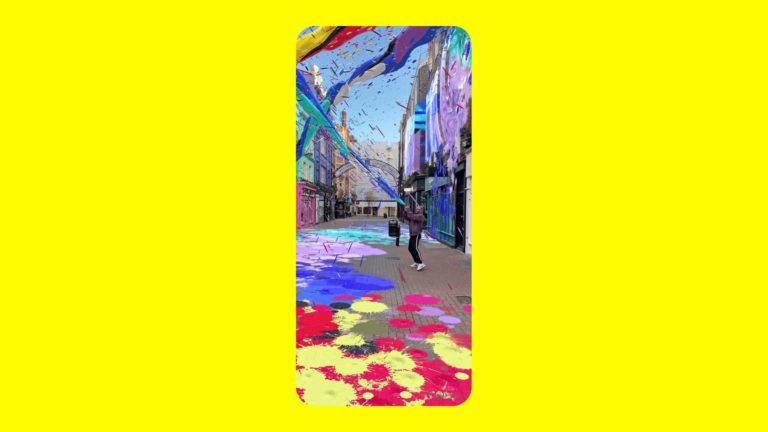
Snapchat is the engagement and revenue leader in consumer AR. This is driven largely from the high-frequency lens usage it’s been able to generate….and its ability to monetize. This stems from Snap’s AR focus, and the technology’s alignment with its core “camera-company” ethos.
Its leading AR position also continues to be validated by performance indicators, including the volume of lenses created and consumed. For example, Snap announced at its December Lens Fest that it has passed one-trillion lifetime lens views from roughly one million lenses.
Snap more recently reported in its Q1 earnings that 200 million users engage its AR lenses daily. Given that it has 280 million total daily active users, this means 71 percent of its user base actively engages with AR. This is a greater usage share than any other consumer AR player.
Quantifying that a bit further, estimates from our research arm ARtillery Intelligence identify other mobile AR platforms as having more overall reach and device compatibility. These include web AR, Spark AR (adding up News Feed, Instagram and Messenger), and others.
But when comparing platform reach with active AR users, Snapchat exceeds all mobile AR platforms in the latter’s proportionate share. In other words, it has the greatest ratio of active AR users to overall users — again, 71 percent. AR is a more prevalent activity among its users.
Virtuous Cycle
One reason Snap has been able to reach the above usage levels and milestones is its ongoing embrace of the lens creator community. This has been a theme over the past two years as it continues to make Lens Studio more attractive for developers across skill ranges.
The thought is that this kicks off Snap’s AR flywheel effect: Lens libraries attract users and engagement. A growing audience then attracts more lens developers which further expands the library and, in turn, more users. And all of the above attracts the real endgame: advertisers.
Seeing this virtuous cycle play out, Snap has doubled down on Lens Studio investment, up to and including the current v. 3.4. Platform milestones in recent history include creator profiles, hand & body templates, Scan, Landmarkers, Local Lenses, Snap ML, and LiDAR.
More recently, Snap announced its Lens Creator Marketplace. This further incentivizes and rewards lens creators by matching them with demand (read: brand marketers). This likewise lowers barriers for brand marketers to adopt AR, thus fueling greater advertising spend.
In this progression, Snap has come a long way from initially keeping AR lens design in-house (where TikTok currently sits in its AR lifecycle). Lens Studio is its way to scale up volume and creativity. And it’s working so far considering the milestones it continues to reach.
Snapchat’s Virtuous AR Cycle: Users, Developers & Advertisers
Training Wheels
Panning back, social media has become a prevailing vessel for mobile AR (partly thanks to Snap). The technology is naturally additive to the already-popular ritual of sharing multimedia through social channels. That’s everything from augmented selfies to stories to TikTok creations.
“Already popular” is the key term, as AR piggybacks on an established activity, rather than forcing new behavior. This aligns with the training-wheels principle we’ve examined in the past. AR isn’t proven enough to get users to seek it out. It has to be laid in their paths.
And that’s precisely what the most successful forms of consumer-based mobile AR have done. The poster child so far is Snapchat, integrating AR into already-popular camera-based media sharing. But TikTok and Instagram loom in its rear-view mirror as emerging AR challengers.
Beyond user traction, AR fits naturally into Snapchat and other social players’ revenue models. Advertisers not only gravitate to all those engaged lens users, but the format itself elevates their ability to demonstrate products or brand narratives — and the numbers back that up.
Meanwhile, if Snap’s AR momentum is any indication, we’ll continue to see Lens Studio evolve rapidly. Snap is driven to propel AR as a core component of its revenue model. It’s internalized the feedback loop of AR-driven financial success and we expect that it will continue to double down.

